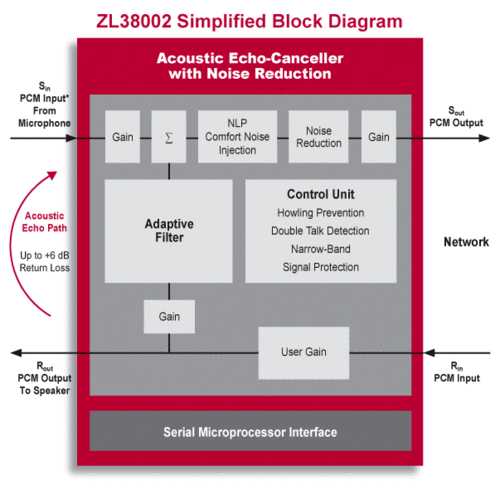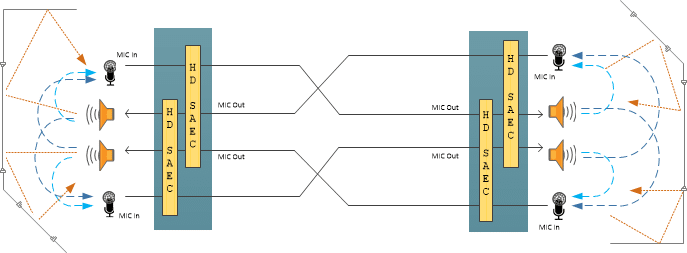

- #ACOUSTIC ECHO CANCELLATION SOFTWARE DRIVER#
- #ACOUSTIC ECHO CANCELLATION SOFTWARE SOFTWARE#
- #ACOUSTIC ECHO CANCELLATION SOFTWARE SERIES#
#ACOUSTIC ECHO CANCELLATION SOFTWARE DRIVER#
DirectSound provides a low latency interface to the sound card driver and can handle the mixing and recording of multiple audio streams.
#ACOUSTIC ECHO CANCELLATION SOFTWARE SOFTWARE#
More recently, it has been positioned as a… … WikipediaĭirectSound - is a software component of the Microsoft DirectX library for the Windows operating system. Flash is frequently used for advertisements, games and flash animations for broadcast.
#ACOUSTIC ECHO CANCELLATION SOFTWARE SERIES#
Technical features new to Windows Vista - This article is part of a series on Windows Vista New features Overview Technical and core system Security and safety Networking technologies I/O technologies Management and administration Removed features … WikipediaĪdobe Flash - (formerly Macromedia Flash) is a multimedia platform used to add animation, video, and interactivity to web pages. Videoconferencing - See also: List of video telecommunication services and product brands A Tandberg T3 high resolution telepresence room in use (2008) … Wikipedia

The time varying acoustic feedback leakage paths can only be eliminated with adaptive feedback cancellation. : For noise masking by saturation, see Sound masking or pink noise.Acoustic quieting is the process of making machinery quieter by damping… … WikipediaĪdaptive feedback cancellation - is a common method of cancelling audio feedback in a varietyof electro acoustic systems such as digital hearing aids. See Noise reduction for electronic noise. Echo suppressors were first developed in… … WikipediaĪcoustic quieting - This article primarily discusses mechanical and acoustic noise. In addition to improving subjective quality, this process increases the… … WikipediaĮcho suppressor - An echo suppressor (sometimes acoustic echo suppressor / AES) is a telecommunications device used to reduce the echo heard on long telephone circuits, particularly circuits that traverse satellite links. The frame size in that case must be a multiple of the partition (block) length, thereby greatly reducing the latency for long impulse responses.Echo cancellation - The term echo cancellation is used in telephony to describe the process of removing echo from a voice communication in order to improve voice quality on a telephone call. Latency may be reduced by using partitioned FDAF, which partitions the filter impulse response into shorter segments, applies FDAF to each segment, and then combines the intermediate results. This can be unacceptable for many real-world applications. Traditional FDAF is numerically more efficient than time-domain adaptive filtering for long impulse responses, but it imposes high latency, because the input frame size must be a multiple of the specified filter length. Without such detection schemes, the performance of the system with the larger step size is not as good as the former, as can be seen from the ERLE plots. To deal with this performance difficulty, acoustic echo cancelers include a detection scheme to tell when near-end speech is present and lower the step size value over these periods.

With a larger step size, the ERLE performance is not as good due to the misadjustment introduced by the near-end speech. % Plot near-end, far-end, microphone, AEC output and ERLEĪECScope2(nearSpeech, micSignal, e, erledB) % Send the speech samples to the output audio deviceĮrle = diffAverager((e-nearSpeech).^2)./ farEchoAverager(farSpeechEcho.^2) % Stream processing loop - adaptive filter step size = 0.04 while(~isDone(nearSpeechSrc)) From the plot, observe that you achieved about a 35 dB ERLE at the end of the convergence period.ĪECScope2.Title = 'Output of Acoustic Echo Canceller mu=0.04' ĪECScope2.Title = 'Echo Return Loss Enhancement mu=0.04' Since you have access to both the near-end and far-end speech signals, you can compute the echo return loss enhancement (ERLE), which is a smoothed measure of the amount (in dB) that the echo has been attenuated. % Far-end speech signal echoed by the roomįarSpeechEchoSrc.SamplesPerFrame = frameSize NearSpeechSrc.SamplesPerFrame = frameSize įarSpeechSrc.SamplesPerFrame = frameSize 'BufferLength', length(x)) ĪECScope1.Title = 'Near-End Speech Signal' ĪECScope1.Title = 'Output of Acoustic Echo Canceller mu=0.025' ĪECScope1.Title = 'Echo Return Loss Enhancement mu=0.025' 'TimeSpan', 35, 'TimeSpanOverrunAction', 'Scroll'. 'LayoutDimensions',, 'TimeSpanSource', 'Property'. 'Method', 'Unconstrained FDAF') ĪECScope1 = timescope(4, fs. % Construct the Frequency-Domain Adaptive FilterĮchoCanceller = dsp.FrequencyDomainAdaptiveFilter( 'Length', 2048.


 0 kommentar(er)
0 kommentar(er)
